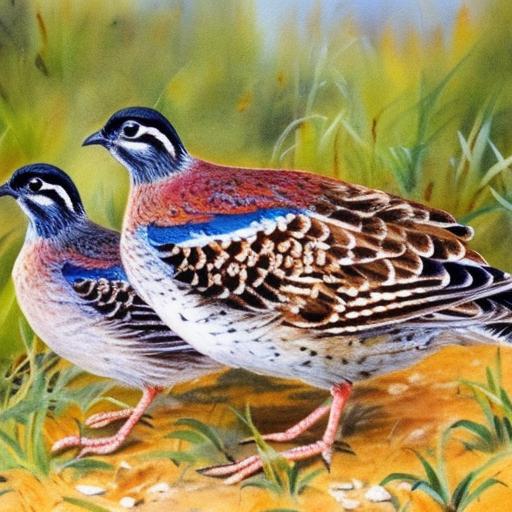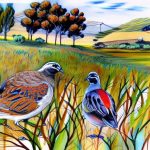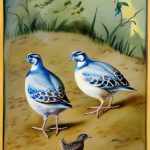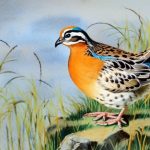Quails are known for their prolific breeding habits, and understanding the breeding season is crucial for successful quail breeding. The breeding season for quails typically begins in the spring and extends through the summer months. During this time, quails become more active in their mating behaviors, with males engaging in courtship displays to attract females. The breeding season is also marked by an increase in the production of eggs by female quails, as they prepare to nest and raise their young.
Quail breeders should be aware of the specific breeding season for the species of quail they are working with, as different species may have slightly different breeding patterns. For example, the Northern Bobwhite quail typically breeds from late spring to early summer, while the California quail breeds from late winter to early summer. Understanding the breeding season for quails is essential for planning and managing breeding activities, such as providing appropriate nesting materials and ensuring optimal environmental conditions for successful breeding.
Key Takeaways
- Quail breeding season typically occurs in the spring and summer months when daylight hours are longer and temperatures are warmer.
- Day length plays a crucial role in triggering breeding behavior in quails, with longer days signaling the start of the breeding season.
- A well-balanced breeding diet rich in protein, vitamins, and minerals is essential for quails to successfully breed and produce healthy offspring.
- Quails exhibit nesting and brooding behavior, with females creating nests on the ground and taking on the primary responsibility of incubating the eggs.
- The incubation and hatching process for quail eggs typically takes around 16-18 days, with proper temperature and humidity levels being crucial for successful hatching.
- Caring for quail chicks involves providing a warm and safe environment, along with a diet high in protein to support their growth and development.
- Tips for successful quail breeding include providing ample space, proper nutrition, and a stress-free environment to encourage natural breeding behavior.
The Role of Day Length in Triggering Breeding Behavior
Day length plays a crucial role in triggering breeding behavior in quails. As the days lengthen in the spring, quails experience hormonal changes that stimulate their reproductive systems. This increase in daylight triggers the release of hormones that signal to quails that it is time to breed. This phenomenon is known as photoperiodism, and it is a key factor in the breeding behavior of many bird species, including quails.
For quail breeders, understanding the role of day length in triggering breeding behavior is important for managing their breeding operations. By manipulating the lighting conditions in their quail housing facilities, breeders can simulate longer days to encourage breeding activity. This can be achieved using artificial lighting to extend the photoperiod, effectively tricking quails into thinking that the breeding season has arrived. By controlling day length, breeders can optimize the timing of their breeding activities and maximize their chances of successful reproduction.
Breeding Diet and Nutrition for Quails
Proper diet and nutrition are essential for successful quail breeding. During the breeding season, quails have increased nutritional demands as they prepare to produce eggs and raise their young. A well-balanced diet that provides essential nutrients such as protein, vitamins, and minerals is crucial for supporting the reproductive health of quails. Protein is particularly important for egg production and chick development, so breeders should ensure that their quails have access to high-quality protein sources such as game bird feed or commercial quail feed.
In addition to a nutritious diet, quails also require access to clean water at all times, especially during the breeding season. Adequate hydration is essential for egg production and overall reproductive health. Quail breeders should also consider supplementing their birds’ diet with calcium to support eggshell formation and prevent calcium deficiencies in laying hens. By providing a well-balanced diet and ensuring proper nutrition, breeders can support the reproductive success of their quails during the breeding season.
Nesting and Brooding Behavior
Nesting and brooding behavior are critical aspects of the quail breeding process. Female quails typically seek out secluded nesting sites on the ground, where they construct shallow depressions lined with grass and other materials to serve as their nests. Once the eggs are laid, the female quail will diligently incubate them, turning them regularly to ensure even heat distribution and optimal development. Male quails may also play a role in protecting the nesting female and her eggs from potential predators.
Quail breeders should provide suitable nesting materials such as straw or hay in their breeding enclosures to encourage natural nesting behaviors in their birds. It is important to create a quiet and secure environment for nesting quails to minimize stress and disturbances that could disrupt the brooding process. Additionally, breeders should monitor nesting females closely to ensure that they are receiving adequate nutrition and are not experiencing any health issues that could affect their ability to successfully hatch and raise their chicks.
Incubation and Hatching Process
The incubation and hatching process is a critical stage in the quail breeding cycle. Once the eggs are laid, they require proper incubation to develop and hatch successfully. Quail eggs typically have an incubation period of around 21 days, during which time they must be kept at a consistent temperature and humidity level to ensure healthy embryo development. Female quails are responsible for incubating their eggs, but in a breeding setting, breeders may choose to use artificial incubators to hatch a larger number of eggs at once.
Maintaining optimal conditions during incubation is essential for successful hatching. Quail breeders should closely monitor temperature and humidity levels in their incubators, as fluctuations can negatively impact embryo development and hatch rates. Turning the eggs regularly is also important to prevent the embryos from sticking to the shell membrane and ensure proper development. Once the eggs begin to hatch, breeders should provide a warm and safe environment for the newly hatched chicks to thrive.
Caring for Quail Chicks
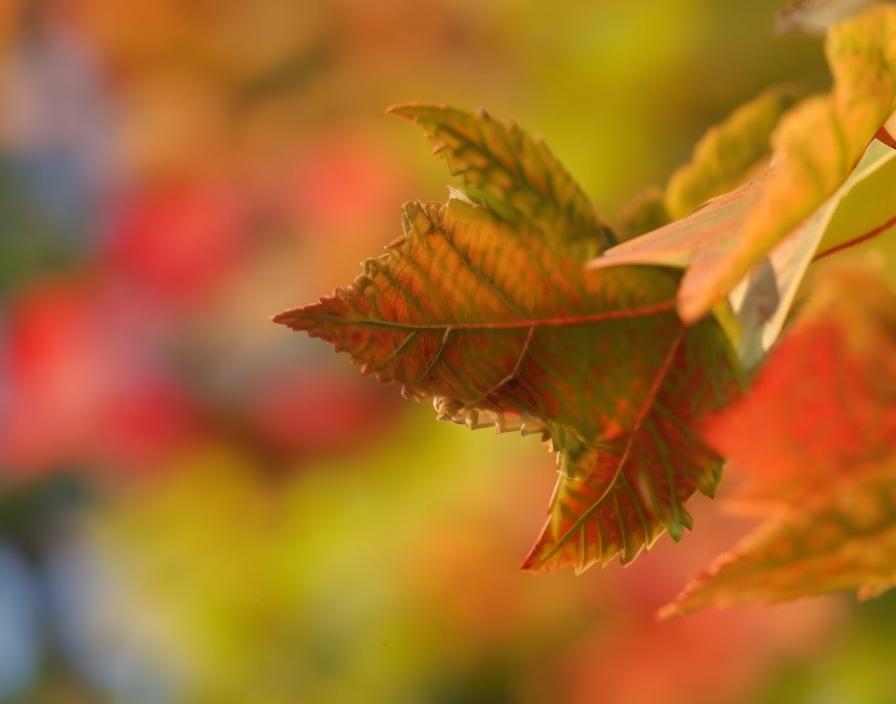
Caring for quail chicks requires attention to detail and proper management practices to ensure their health and well-being. Newly hatched quail chicks are fragile and vulnerable, so it is important to provide them with a warm and secure brooding area equipped with heat lamps or brooders to maintain an appropriate temperature. Chicks should also have access to clean water and a high-quality starter feed formulated specifically for young quail.
Quail chicks grow rapidly, so it is important to monitor their growth and adjust their diet as needed to support their nutritional requirements. Providing a balanced diet with adequate protein is essential for promoting healthy growth and development in young quails. Additionally, regular health checks should be conducted to identify any signs of illness or disease early on and provide appropriate care as needed. By providing proper nutrition, a warm environment, and attentive care, breeders can ensure that their quail chicks thrive and reach maturity successfully.
Tips for Successful Quail Breeding
Successful quail breeding requires careful planning, attention to detail, and a thorough understanding of the reproductive behaviors and needs of quails. To maximize breeding success, breeders should create optimal environmental conditions for their birds, including providing suitable nesting materials, maintaining proper lighting conditions, and ensuring access to a nutritious diet. Monitoring the health and behavior of breeding quails is also crucial for identifying any issues that could impact reproductive success.
In addition to environmental management, breeders should also pay close attention to egg incubation and chick rearing practices to ensure healthy hatch rates and strong chick development. Regular monitoring of incubation conditions, providing appropriate brooding environments, and offering high-quality nutrition are key factors in successful quail breeding. By implementing these tips and best practices, breeders can increase their chances of successful reproduction and raise healthy generations of quails for various purposes such as meat production or hunting purposes.
As quail breeding season approaches, it’s essential to ensure that your coop is well-prepared for the upcoming influx of new arrivals. To help you create the perfect environment for your quail, check out this insightful article on The Chicken Coop Country Diner. It provides valuable tips on creating a comfortable and nurturing space for your birds. Additionally, consider exploring the benefits of an A-frame chicken coop to accommodate the growing quail population. And don’t forget to also consider the dietary needs of your birds during this crucial time by reading up on what you should feed ducks. These resources will help ensure a successful and thriving breeding season for your quail.
FAQs
What is the quail breeding season?
The quail breeding season typically occurs in the spring and summer months, when the weather is warmer and food sources are more abundant.
How long does the quail breeding season last?
The quail breeding season can last for several months, typically from March to August, depending on the specific species and geographic location.
What are the signs that quail are breeding?
During the breeding season, male quail will often display courtship behavior such as calling, strutting, and puffing out their feathers to attract females. Females may also exhibit nesting behavior and lay eggs.
How can I encourage quail breeding on my property?
To encourage quail breeding on your property, you can provide suitable habitat such as grasslands, shrublands, and open woodlands, as well as food sources and nesting sites. It’s also important to minimize disturbances during the breeding season.
What should I do if I find a quail nest during the breeding season?
If you come across a quail nest during the breeding season, it’s best to avoid disturbing it as much as possible. Keep pets and other potential predators away from the area, and allow the quail to continue their nesting undisturbed.
Meet Walter, the feathered-friend fanatic of Florida! Nestled in the sunshine state, Walter struts through life with his feathered companions, clucking his way to happiness. With a coop that’s fancier than a five-star hotel, he’s the Don Juan of the chicken world. When he’s not teaching his hens to do the cha-cha, you’ll find him in a heated debate with his prized rooster, Sir Clucks-a-Lot. Walter’s poultry passion is no yolk; he’s the sunny-side-up guy you never knew you needed in your flock of friends!

